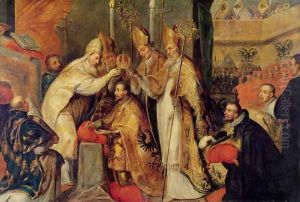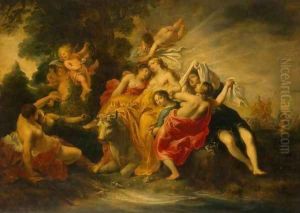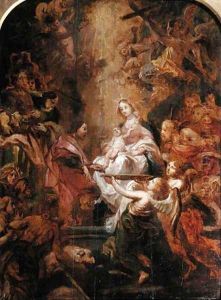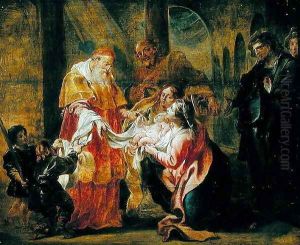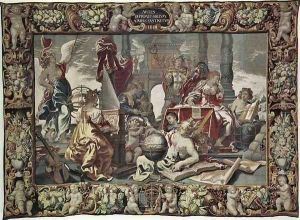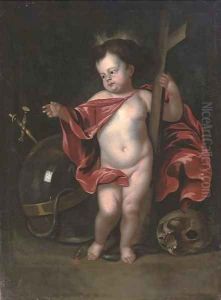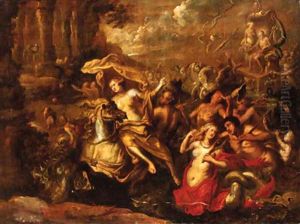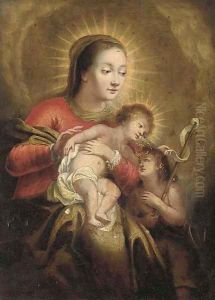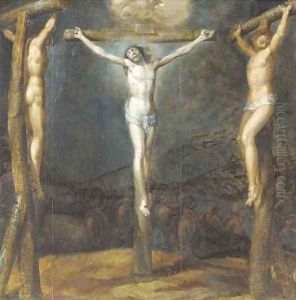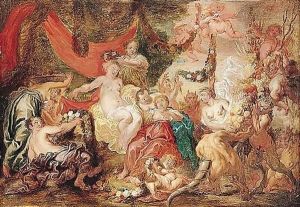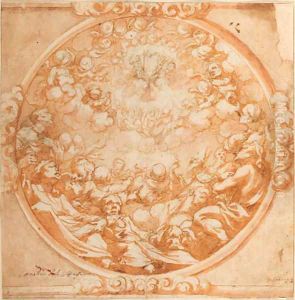Cornelius I Schut Paintings
Cornelis Schut was a Flemish Baroque painter, draughtsman, and engraver born in Antwerp in 1597. His early life and training are not extensively documented, but it is known that he became a master in the Antwerp Guild of St. Luke in 1618, indicating that he likely received his training in Antwerp, a major center for art and culture during the Baroque period. Schut's work is characterized by its dynamic compositions, vibrant use of color, and incorporation of dramatic light and shadow, hallmarks of the Baroque style.
Schut traveled to Italy early in his career, where he was influenced by the work of Caravaggio and his followers. This experience had a profound impact on his style, integrating the Caravaggesque use of chiaroscuro and a more dramatic approach to subjects. During his time in Italy, he worked in various cities, including Rome, where he became associated with the Bentvueghels, a society of mostly Dutch and Flemish artists working in Rome. He was given the nickname 'Broeder Sachtmoedig' (Brother Gentle) by his peers in the Bentvueghels.
Returning to Antwerp in the 1620s, Schut established himself as a leading religious painter, executing altarpieces for churches in Antwerp and its surrounding areas. His works from this period often featured biblical and mythological scenes, filled with emotion and energy. Schut also became involved in designing tapestries and was known for his skill in this medium.
In addition to his religious works, Schut painted allegorical scenes and collaborated with other artists on larger projects. One of his most significant collaborations was with Peter Paul Rubens and Jacob Jordaens on the decorations for the Joyous Entry of Cardinal-Infante Ferdinand into Antwerp in 1635, a major event that celebrated the new governor of the Spanish Netherlands.
Despite his success, there are few records of Schut's life after the 1630s. He continued to work in Antwerp until his death in 1655. Cornelis Schut's legacy as a Baroque painter is evident in his contribution to the development of Flemish art, his influence seen in the works of later artists in the region. His ability to blend the dramatic Italian influences with the rich traditions of Flemish painting created a body of work that remains celebrated for its vitality and expressiveness.
